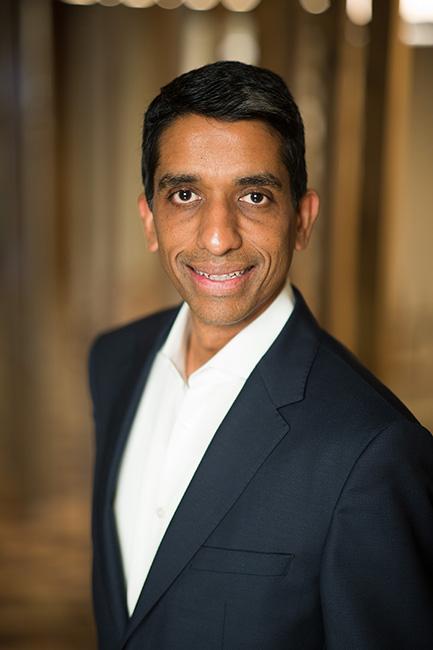In the last year, the coronavirus pandemic has affected nearly all aspects of work, sparking widespread changes across HR from engagement to talent acquisition. Many experts have dubbed the crisis “The Big Accelerator” because it evolved existing HR practices and policies at such a rapid pace.

Jason Averbook
“COVID-19 served as an accelerant—a time machine of sorts for bringing the people function in alignment with how the outside world had already been working, thinking and living for the past decade,” says Leapgen co-founder and CEO Jason Averbook, who will be speaking next week at the free, virtual Spring HR Tech event. While many in HR knew that those shifts would eventually be needed, he says, it “took a global pandemic to drive the appetite for change in organizations.”
While some changes may stick around long after COVID-19 is gone, others will continue to evolve, experts say. The challenge now, Averbook notes, is for HR leaders to keep their “foot on the accelerator” to ensure the shifts keep heading in the direction of “humanizing work and enabling people to bring their whole selves to the profession.”
Here’s a snapshot of key trends that the pandemic ushered in since the World Health Organization declared the global pandemic on March 11, 2020.
How we communicate
Last year, When I Work onboarded 35 employees—who still haven’t personally met each other due to the pandemic.
Martin Hartshorne
The company, which provides scheduling and collaboration software for shift-based workplaces, is headed by CEO Martin Hartshorne. He says that COVID has accelerated the development of communication and collaboration tools that “make employees feel like they’re communicating human to human,” which has alleviated some of the burden of onboarding new hires as well as kept existing employees connected.
He points to Slack, Microsoft Teams and Zoom as examples of popular platforms that offer combinations of workspace chat, videoconferencing, social networking, file storage and distance education.
“COVID has also accelerated the trend that will ultimately be the death of email in knowledge-based organizations,” Hartshorne says. “We’ve gone past the tipping point where we no longer use email as the primary means of employee communication.”
Meanwhile, software is also being used to simplify contact tracing and to ease rolling out vaccines to workers.
“Everyone is trying to minimize the physical presence in their office and leaning on dynamic, digital tools to satisfy work/life needs,” says Hartshorne.
Looking ahead, he anticipates that all-in-one platforms will manage employee onboarding, tracking and engagement and ultimately help build a strong company culture.
“That’s what’s missing,” says Hartshorne. “Nobody has built a product that does all of that so HR is trying to stitch all of that together.”
How we hire
The pandemic has been driving the talent acquisition process by fueling a fundamental shift in how work gets done.
According to a recent report by SAP and Oxford Economics–Agile Procurement Insights Research–42% of workforce spend is on external labor.
“That number was in the 25% to 30% range before COVID,” says Arun Srinivasan, general manager at SAP Fieldglass, a software company that helps organizations find, engage and manage external workers.
Related: Learn more at free, virtual Spring HR Tech.
“Organizations are being challenged to rethink their strategy and [identify] the top two or three areas where they want to establish their competitive foothold.” Arun Srinivasan, general manager at SAP Fieldglass
He says the skills shortage and the devastating economic impact of the pandemic have forced employers to think differently about contingent workers in their talent pipeline.
“We saw an increased demand in the second half of 2020 for [external] workers,” says Srinivasan. “Acquiring talent from different sources or channels is central to HR’s strategy. This supply chain that HR is building will be here after COVID.”
Even job descriptions have changed. When comparing those created before COVID to similar job titles today, he says there’s a 30% difference in responsibilities. To fill job vacancies, his clients have been equipping workers with 21st-century skills, increasing internal promotions and expanding their talent search to different regions of the country or world.
“Organizations are being challenged to rethink their strategy and [identify] the top two or three areas where they want to establish their competitive foothold so they can come out of this crisis stronger,” Srinivasan says. “They’re trying to find the best talent in areas of strategic importance to be prepared for what’s coming after COVID.”
How we learn
Many companies have pushed classroom learning onto digital platforms.
“Organizations have figured out ways to digitize learning and move it into an on-demand, self-service platform,” says Julie Gurican, senior director, people, at BenchPrep, which provides an online learning and development platform. “At some universities, the in-person option is no longer available.”
Gurican adds that her organization and others have extended online learning to include onboarding. Going forward, she suspects that organizations will create a hybrid learning environment since employees have different learning styles.
Meanwhile, the biggest barriers to digitizing learning are the lack of technical expertise and resources to make the switch.
“You need a team of people dedicated to the digital transformation or figuring out how to translate content online,” she says. “You can’t just copy and paste. There’s a lot of learning science that goes into making sure that outcomes are accomplished online.”
Related: 2 crucial skills for employers to teach workers right now
She predicts employee learning will transition into customized experiences that focus on individual career interests or choices, capabilities and performance. Instead of one-size-fits-all programs, they’ll resemble Netflix by accommodating learner preferences and abilities.
“Artificial intelligence will really think about individual learners and where they’re trying to go long-term, not just short-term,” says Gurican, adding that BenchPrep’s system currently filters out content that employees excel in and addresses areas they need to beef up. “It will ensure that learners are focusing on areas they’re not as strong in and getting the learning outcomes they’re looking for.”
How we tend to employee needs
At the beginning, some employers believed the pandemic would hurt employee engagement levels.
Patrick Hyland
But pride, motivation, commitment and willingness to advocate for the company improved in many organizations when employees felt supported by their organization during the pandemic, says Patrick Hyland, director of research and development at Mercer, a global consulting firm.
According to Mercer’s 2020 Cross-Organizational Field Study, a vast majority of employees (91%) reported that their organization provided them with key information to stay healthy and safe, while 72% said the company clearly communicated present and future plans. Likewise, Hyland adds that many employees were just happy to have a job at a time when so many layoffs were taking place.
Still, mental health struggles are skyrocketing among American employees. According to the Kaiser Family Foundation, rates of anxiety and depression among U.S. adults have tripled during the pandemic, while the Centers for Disease Control reported that 40% of Americans reported mental health issues or behavioral health challenges in recent months.
Related: Learn more at the free, virtual Health & Benefits Leadership Conference.
“Mental health stress and wellbeing are definitely a critical part of the employee experience that organizations have historically not paid attention to,” says Hyland. “It’s much more on their agenda in 2021.”
According to Mercer’s TheFuture Of Work & The Future of Employee Listening, 61% of organizations are planning to invest more time, attention and resources into mental health.
Nearly 90% of organizations are also planning to implement post-pandemic changes to flexible work while HR professionals will likely develop a more granular understanding of the employee experience, he says.
“So many employees are having such different experiences coping with COVID,” says Hyland. “You can’t paint with a broad brush anymore.”
Where we work
Some companies had a knee-jerk reaction when the pandemic first hit, says Julie Derene, global head of talent management at Ceridian, a global human capital management software company.
Many employers had to quickly arrange for the majority of their employees to work remotely. Some lacked the experience of managing a large, remote workforce and were more flexible than needed with operational practices, procedures and employee accommodations, she says. Now, one year later, some are recognizing that and pulling back the reins.
Before COVID-19, one in five employees telecommuted or worked remotely, according to the Pew Research Center. Now, 71% work from home all or most of the time.
But some companies are now “reeling in” that flexibility, says Derene.
“It was not realistic for businesses [as a long-term strategy],” she says, adding that a downstream effect around fairness develops because not every job shares the same latitude of flexibility. “I applaud organizations for having been as flexible as they could, but now, one year later, reality is setting in. There are certain areas they will need to box in that notion of flexibility.”
Remote work has also pushed employers to virtualize traditional on-site activities, making more of them on-demand, in real-time. With mental health issues on the rise, Derene says, employers are now more focused on virtualizing, tailoring and delivering wellness support on all levels to remote workers based on their individual experiences.
“Many of these things were already going to happen,” says Derene. “We just fast-tracked ourselves into the future.”
